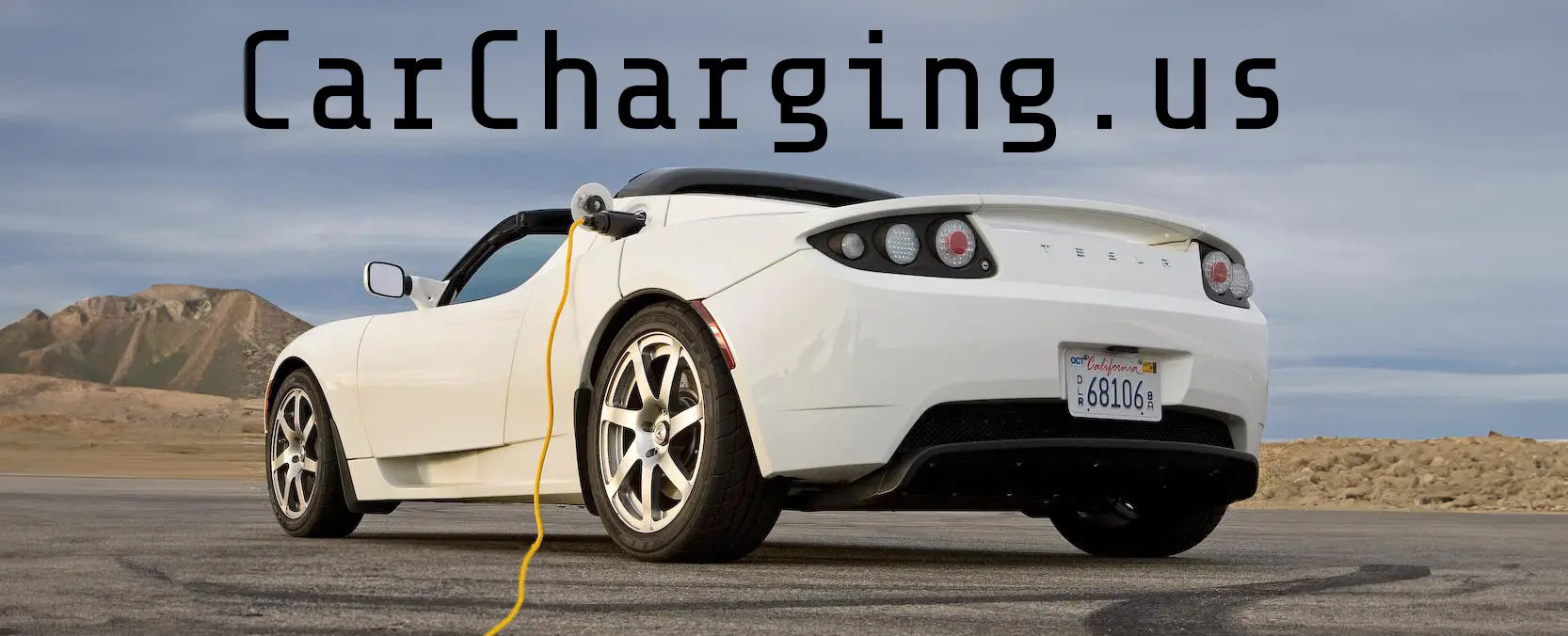Mobile EVSEs
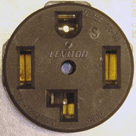
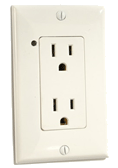
A Mobile EVSE is just like a regular EVSE that you install in your house, except that you can take it with you in your car. If you travel to rented condos/houses and other destinations that have accessible plugs, I highly recommend getting a mobile EVSE.
Some manufacturers include a 120/240V capable mobile EVSE with the car purchase (GM, Ford, Rivian), while others do not anymore (Tesla).
At a minimum, a mobile EVSE allows you to plug into a regular household 120V receptacle. Over 16 hours of overnight charging, you could get 48 miles of range this way. But there are potentially a lot of other higher power receptacles you could plug into including receptacles for an electric dryer, an air conditioner, a stove, an RV hookup, or a welder plug (the Receptacle Identification page shows what the receptacles look like).
Here's how fast you can charge using various receptacles (typical values, charge time depends on your EV, exact voltage, etc.):
| Receptacle | Volts/Amps | Typical Miles/Hr | Miles over 16 hours |
|---|---|---|---|
| Household receptacle | 120V/15A | 3 | 48 |
| 20A Household receptacle | 120V/20A | 5 | 80 |
| 30A RV (TT-30 receptacle) | 120V/30A | 7 | 112 |
| 20A NEMA 6-20 (AC, Table Saw) | 240V/20A | 10 | 160 |
| 30A Dryer | 240V/30A | 15 | 240 |
| 50A (RV or Welder) | 240V/50A | 25 | 400 |
Following is a list of capable mobile EVSEs that will allow you to charge on any receptacle.
Tesla Mobile Connector
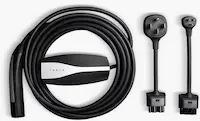
Tesla makes a very inexpensive and capable mobile EVSE. If you own a Tesla, you should consider buying one of these. For other EVs, you can still use this if you buy a Tesla to J1772 adapter.
The nice thing about the Tesla mobile EVSE (they call it a Mobile Connector) is that it has detachable plugs so you can plug directly into a dryer receptacle, or any 120V or 240V receptacle and the unit automatically will set the amperage draw to the correct value for the type of plug you are using. The Tesla Mobile Connector comes with a 15A/120V plug, but you can buy others at $35 each, and you can even buy third party Mobile Connector adapters for unusual plugs like a TT-30 from vendors like EVSEAdapters.
TravelMaster Mobile EVSE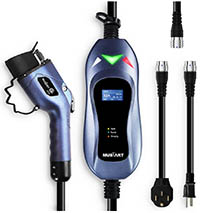
The TravelMaster is another J1772 EVSE that has interchangeable plugs to accomodate a large number of receptacles. The EVSE automatically adjusts the advertised current to the car depending on which plug adapter is attached. It comes with plug adapters for NEMA 14-50, and NEMA 5-15, and more adapters are available to purchase from the manufacturer. |
ZenCar Mobile EVSE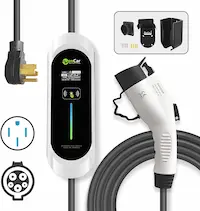
EVSEAdapters sells some small capable mobile EVSEs for J1772 vehicles. Check the product page to see what they have in stock. You can buy various adapters, also from EVSEAdapters, and you'll have a very capable mobile EVSE. Just make sure you set the amperage draw to 80% of the circuit breaker you are charging from when using these mobile EVSEs. The Tesla Mobile Connector auto sets the amperage draw based on the plug used with it, but these other mobile EVSEs generally do not. |
Grizzl-E Mini EVSE
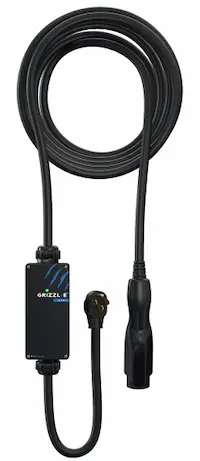
Grizzl-E sells a small mobile EVSE that comes with five different plugs: 14-50, 6-50, 14-30, TT-30 and a 5-15 household plug. It can charge at both 120V and 240V, from 7A all the way to 40A. You can also make or buy other adapters. Just make sure you set the amperage draw to 80% of the circuit breaker you are charging from when using these mobile EVSEs. The Tesla Mobile Connector auto sets the amerage draw based on the plug used with it, but these other mobile EVSEs generally do not.
